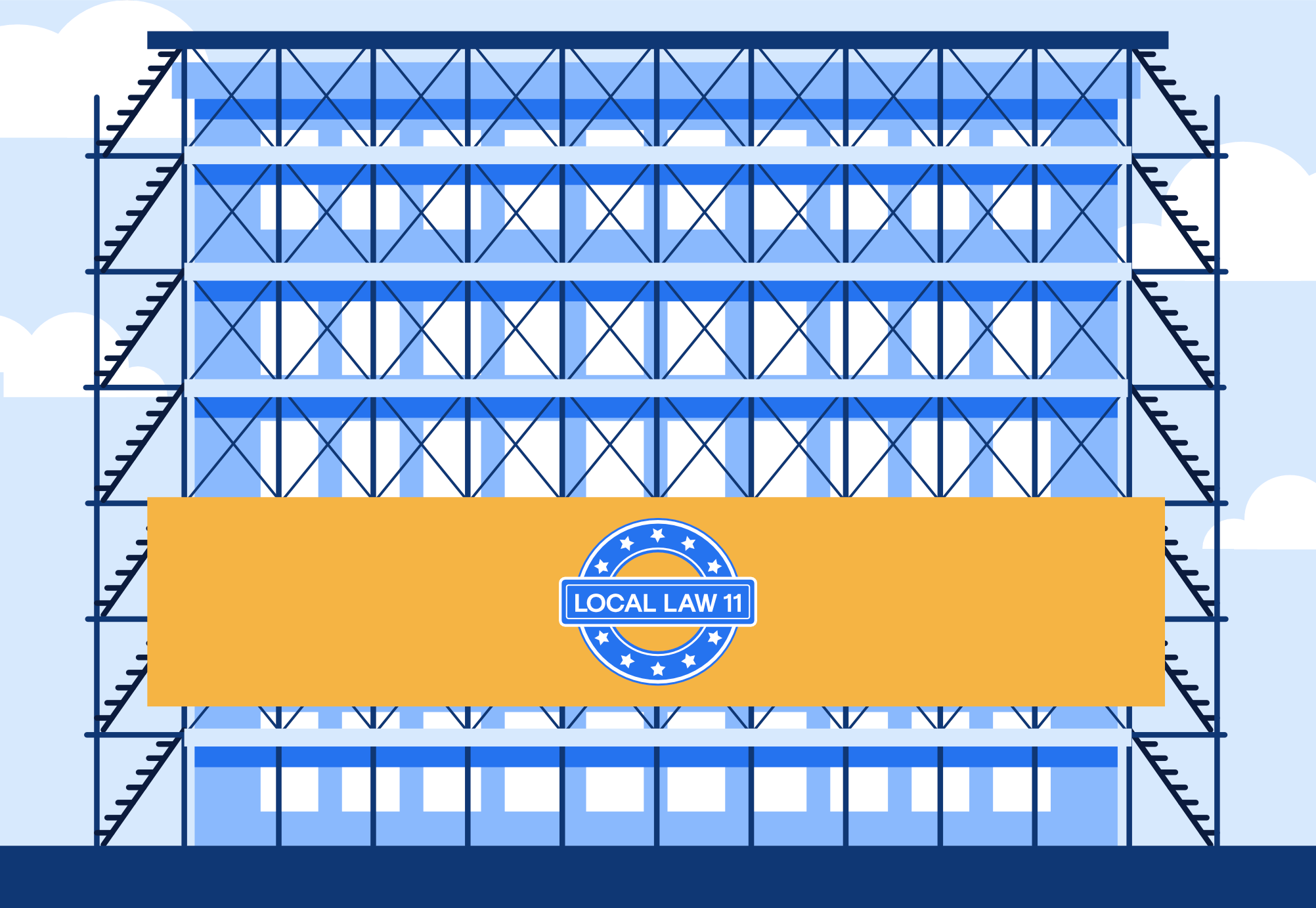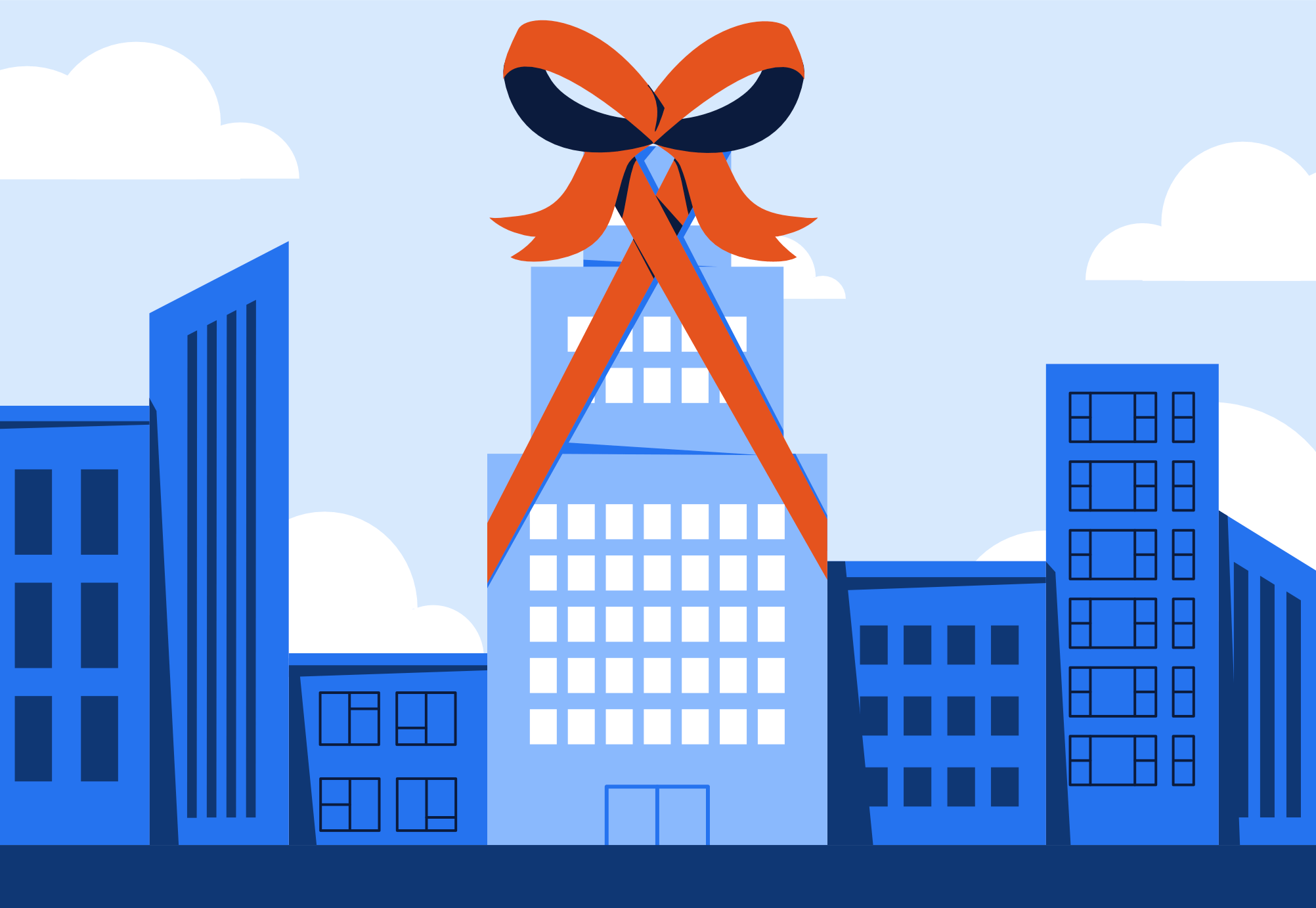What is the NYC Facade Inspection Safety Program?
The Facade Inspection Safety Program (FISP) requires owners of buildings higher than six stories to inspect their exterior walls and appurtenances every five years. They must also file a technical building facade report with the New York City Department of Buildings. Between 2010 and 2015, 13,500 buildings were required to comply so it has a significant impact on the city.
The program has been refined over the years to ensure maximum safety – starting with Local Law 10, then Local Law 11 and now FISP. The goal of each program is simple - to make sure nothing falls off or out of a building’s facade, endangering people below. The need for such programs became evident in the 80s and 90s after a series of unfortunate events where pieces of buildings became dislodged and struck people walking below.
While today’s program is technically FISP, most people still call it Local Law 11 so that is what we will use in this post.
What is Local Law 10?
In May of 1979, a college student at Barnard College was killed when a piece of terra cotta fell from the 8th floor of a building on West 115th Street. In response, the mayor at the time, Ed Koch, took less than a year to sign Local Law 10. Much like today, Local Law 10 required all buildings over six stories to have their facades inspected at least every five years. There were some important differences though.
Initially, inspectors only had to evaluate a building facade that faced the street - not the entire building. They also did not have to inspect any building that was set back at least twenty five feet from the street. Perhaps most surprisingly, inspectors did not even need to get up close to do the inspection - simply looking at the facade from the street was satisfactory.
As you can see, there were a few holes in Local Law 10. Perhaps due to these oversights, there were a number of incidents in December 1997. Almost one after another, three pieces of building material fell to the sidewalk. Thankfully nobody was injured in these incidents. All of these buildings had been inspected subject to Local Law 10 so clearly there was more work to be done.
How is Local Law 11 different from Local Law 10?
As you may have guessed, the goal of Local Law 11 was to button up Local Law 10 and hopefully prevent accidents going forward. In March 1998 (three months after the incidents above), Mayor Rudolph Giuliani upgraded to Local Law 11 where the goal was to make sure any facade that could realistically endanger pedestrians was safe.
No longer were only street-facing facades subject to inspections. Now any wall that was more than one foot away from another wall needed to be inspected. Reports also needed to be submitted to the Department of Buildings via a standardized form to make reviewing thousands of reports each year easier. Squinting from the street was also no longer acceptable. With Local Law 11, inspectors needed to conduct an up close examination of any street facing facade, which usually involves scaffolding. In addition to greatly increasing the rigor of inspections, pedestrians often find the ubiquitous scaffolding a welcome respite from sudden rainstorms!
What are appurtenances?
In addition to inspecting the facades of buildings, all appurtenances must also be inspected. An appurtenance is basically anything attached to the facade. Think of balconies, railings and fire escapes. Balconies and railings were added to the scope of Local Law 11 in 2014 after a woman fell when the balcony railing on which she was sitting gave way. A subsequent investigation found a pervasive problem as all balconies in the building were defective or not up to code.
What happens during a Local Law 11 inspection?
Inspections are conducted by a Qualified Exterior Wall Inspector or QEWI. In order to be eligible for QEWI status, the inspector must be either an architect or engineer. Specifically, the inspection must be carried out by a New York State Registered Architect or New York State licensed Professional Engineer with at least one year of experience.
The inspector will conduct a critical examination of the appropriate sides of the building. They will be looking out for loose bricks, cracks, bulging masonry, and any other signs that the facade may be deteriorating. A thorough inspection will also utilize various tool to determine if there could be unseen issues under the surface.
Who files the inspection report and when are the filing cycle windows?
Once the inspection is complete, the QEWI files a report with the Department of Buildings via its system DOB NOW: Safety. The report must be filed within 60 days of final inspection. Often after the inspection is filed by the QEWI, the Department of Buildings will send its own inspector to take a look at the exterior and see if there were any obvious oversights.
New York City has “cycles” of Local Law 11. A new cycle starts every five years within each, buildings are separated into three sub-cycles that dictate when their facades must be inspected. A building’s sub-cycle is determined by the last digit of its block number. Each sub-cycle has a two year window to conduct its inspection in order to give buildings flexibility and avoid unserviceable spikes of demand for QEWIs.
New development gets a pass for five years after being granted its Temporary Certificate of Occupancy. After that five year period, it must comply with the next scheduled cycle.
What happens when a violation is found?
Once the inspection is complete, there are three designations to choose from - “Safe,” “Unsafe” or “Safe with a Repair and Maintenance Program” (SWARMP).
For buildings classified as Safe, no work needs to be done. Unsafe buildings have a problem that needs to be addressed immediately. Typically measures must be taken within 30 days but if extra time is needed, the QEWI can file for an extension of 90 days. SWARMP buildings present no immediate danger to pedestrians but items did come up that could and should be addressed in the near future.
What are Local Law 11 carryover conditions?
In prior cycles, buildings could carryover conditions that would land it a SWARMP designation today. In other words, they could keep saying they were going to fix them but never actually do anything. That doesn’t fly anymore as the Department of Buildings will designate a building Unsafe if fixes should have been made. Even if it is not a currently unsafe condition and could theoretically be postponed again, the Department of Buildings will penalize a building for not taking action. For this reason, it’s important the building make sure any issues in the a previous SWARMP rating were actually resolved before the next inspection takes place.
As a NYC homeowner, how does Local Law 11 affect me?
If you live in a building of six or fewer stories, you won’t have to deal with the law. It still only applies to buildings over six stories. Residents of other buildings should be aware of the inspections that will occur every five years.
While scaffolding is put up around New York City for all kinds of reasons, Local Law 11 is likely responsible for most installations. An inspection is not done overnight. Just the installation and removal of the scaffolding can be disruptive to residents. If you live on a low floor, scaffolding may block sunlight from your apartment.
There is also a cost to the law's inspections. While residents don’t pay directly, the cost is baked into their monthly common charges or maintenance and it isn’t cheap. Obviously, costs vary widely depending on the size of the building, type of building materials and many other factors but according to Robert Grant at Midboro Management, Inc., each Local Law 11 inspection will cost of a few hundred thousand dollars to more than one million. To add insult to injury, there’s even a $265 filing fee charged by the city and penalties rack up quickly if a building fails to file. Even though these expenses only come up once every five years, it’s still a lot of money.
Putting some very rough number to that, if a building has 200 units and its inspection costs $500,000, each owner would be paying $500/year to comply with Local Law 11. Keep in mind this is just for the inspection. If any issues are found, the cost to fix them would be incremental.
How does Local Law 11 affect NYC home buyers?
When apartment shopping, “Local Law 11” is something you’ll often hear to explain the scaffolding outside. Sellers likely try to avoid listing an apartment during a Local Law 11 inspection as light can be significantly impaired but sometimes timing doesn’t work out.
If you’re considering an apartment affected by Local Law 11, a good idea is to look at the unit's previous listings where you will likely find unobstructed photos. If you’re not sure how to do this, your agent should be able to help you out. That simple step and a little imagination can result in a great deal.

